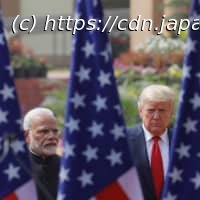Washington – A flare-up in a long-running border dispute between China and India has raised the temperature in their bilateral relationship. Yet it…
Washington – A flare-up in a long-running border dispute between China and India has raised the temperature in their bilateral relationship. Yet it may be just as significant for the trilateral U. S.-China-India relationship, which will do a great deal to shape the strategic landscape of the 21st century.
Indian governments rarely move as quickly as their U. S. counterparts might like, in part because the bureaucracy moves glacially even when there is a meeting of the minds among political leaders, and in part because of the residue of India’s Cold War tradition of nonalignment. U. S. cooperation with Pakistan on counterterrorism after the Sept. 11,2001, attacks was also a sticking point. More recently, Indian officials have been reluctant to do anything that risks making an outright enemy of China, a natural rival that they must nonetheless find ways of living with.
Yet the geopolitical logic of a U. S. partnership has grown stronger over time, mostly because China has become more assertive. Indian strategists can be forgiven for wondering if Beijing’s «Belt and Road» initiative is an encirclement campaign, given how determinedly China has been building its presence in Pakistan, Sri Lanka and other points along the Indian Ocean.
That China now appears to have conducted a small-scale invasion of Indian-controlled territory, less than three years after a tense standoff in 2017, has reminded Indian officials of what living next to an aggressive, autocratic superpower might mean. India’s having to impose a nationwide lockdown to deal with a virus that began in China has hardly improved the tenor of the relationship.
The pace of U.






